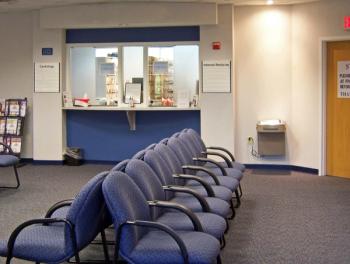
Patients with obesity want respect, not lectures, in primary care visits
Key Takeaways
- Patients with obesity seek respect and attentive listening from healthcare providers, not resource-intensive changes.
- Surveyed patients rated an ideal visit scenario highly, prioritizing care, respect, and appropriate referrals.
Drexel University research shows simple changes could make primary care visits more welcoming and less stressful for patients.
For many people living with
Researchers teamed up with the
“People with obesity are asking for basic, every day, human interactions — not resource-intensive changes but literally common-sense practices, of which our primary care offices often fall short,” said Kristal Lyn Brown, Ph.D., lead author of the study and an assistant professor at Drexel University.
The ideal visit
To see how that vision stacked up, the team surveyed 250 adults with obesity. Respondents rated the patient-designed scenario an average of 9.4 out of 10 — much higher than the 8.0 they gave their own most recent visits.
Patients said the top priorities were:
- Physicians treating them with care and respect (96%)
- Physicians who “really listen” (95%)
- Referrals to specialists who also provide respectful care (92%)
Other factors mattered too, like recognizing the effort patients put into their health, not blaming every condition on weight and offering gowns and blood pressure cuffs that actually fit.
Why it matters
Weight stigma — negative assumptions and stereotypes tied to body size — can take a real toll on patients’ mental health and trust in physicians. Research has linked it to depression, anxiety and even avoiding care altogether. Within primary care, studies show doctors often spend less time with patients who have obesity and build less rapport, fueling mistrust.
The physical space can add to the problem. A too-small gown or narrow chair can send the message that the clinic wasn’t designed for them.
The study, published in the September 2025 issue of
“People living with obesity want empathetic, respectful health care,” Brown said. “We hope these results encourage providers and their staff to make their spaces more inclusive and free of weight bias and stigma.”
The researchers also encouraged primary care physicians to pay attention to where they send their patients, making sure specialists are equally inclusive and respectful.
Most of the survey participants were white women and many were members of the Obesity Action Coalition, which means the results may not represent every patient’s experience. Even so, the findings add to a growing body of research showing that stigma is a major barrier to care.
The Drexel team believes the co-design approach — bringing patients into the process to help shape what care looks like — could be applied well beyond obesity care to make health systems more equitable overall.
Newsletter
Stay informed and empowered with Medical Economics enewsletter, delivering expert insights, financial strategies, practice management tips and technology trends — tailored for today’s physicians.















